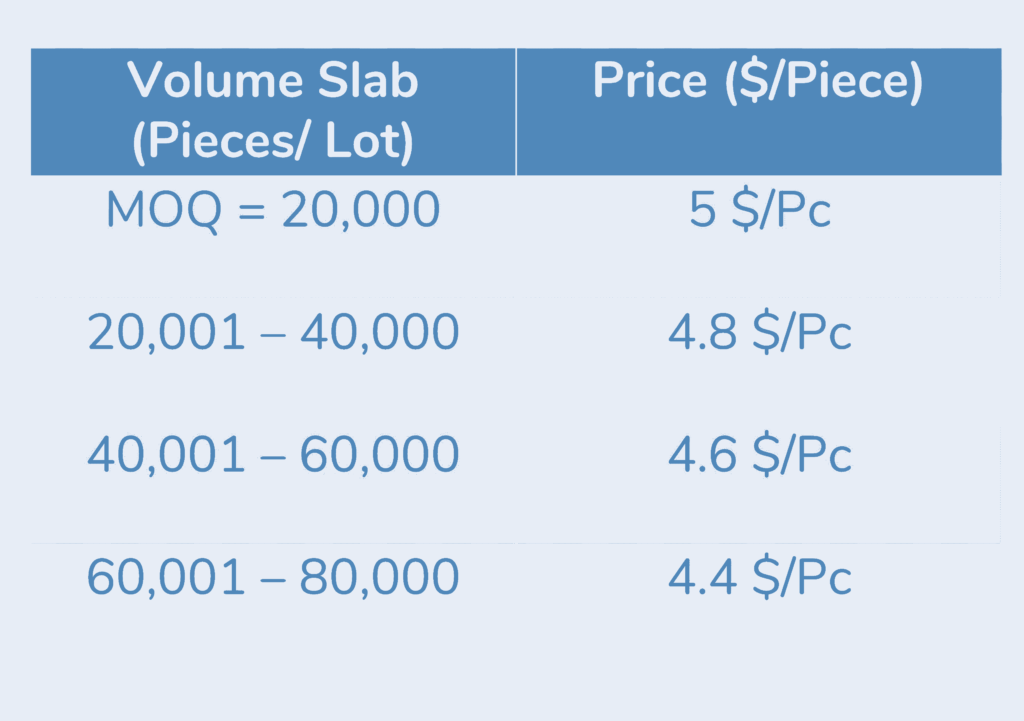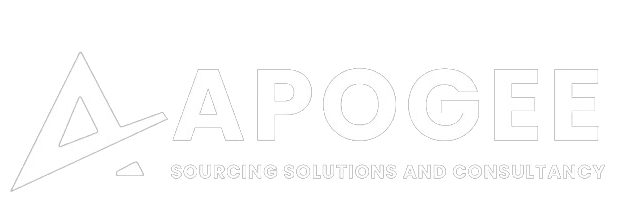25 MUST HAVE points in International Business Quotation:
We understand that Quotation is all about presenting our price and other ‘Terms & Condition” to customers, but in international business, this has bigger importance.
Let’s start with a case wherein a seller has received RFQ [Request for Quotation] for a mechanical component (from overseas buyer) and the seller has been asked to submit his best quotation by the buyer.
A quotation is an opportunity for the seller to show, how clearly he has understood about the product & customer’s requirements.
Let’s talk about the ‘25 must have points’ for an exhaustive quotation for international business.
1. Price & Price Condition:
You need to specify the basis for the quoted price. For example, mention in your quotation that this price is based on the following:
- Drawing Number XXXX,
- Packing Standard XXXX,
- Design Standard XXXX and
- Surface Treatment Standard XXXX.
This will clarify the buyer about the seller’s understanding. This is like a necessary evil, mentioning a price basis will save you from many questions in the future.
Also mention broadly about different manufacturing processes considered in the quoted price.
2. Volume Based Pricing:
Through my personal experience, I can say that a table containing different slabs for prices, based on volume off-take makes the offer lucrative to the buyer.

3. Raw Material Specification:
If the customer’s drawing or RFQ package asks for specific steel, normally we search the equivalent or nearest steel and propose the same to the customer.
For example, the customer’s drawing asks 1.4301 as Steel grade.
1.4301 Steel is known as SS-303 steel in India & SUS303 in Japan…
While this is a correct approach but we also need to make sure that customer should be in a position to verify our provided information (about equivalent material). So please send the web link or standard used for comparison.
In case there is no equivalent material and we are proposing ‘nearest’ material, then make sure you are sending, not only the Chemical Composition only. But also Mechanical properties, testing standard & other details also.
4. Quality Confirmation Plan:
It is required to mention the details about how the supplier will certify the product quality before dispatching to the customer. Please specify separately about In-Process Quality Checking Plans and Pre-Dispatch Quality Inspection Plans.
5. Quality Documents:
Kindly mention the documents that the seller will be submitting to the buyer and the frequency of the documents.
In case the buyer needs more documents or he is not satisfied with your proposed reports he may ask before finalizing the business only. But imagine a situation wherein you have dispatched the goods then the report is being asked…this will always remain a case to fight…

6. Marking/ Traceability or Labeling:
Marketing, trace-ability, and labeling are separate altogether. The purpose of mentioning under the same headline is to make a point about confirming that the subjected goods are supplied by you and you can backtrace from which lot or month you supplied these.
If there is no traceability, and 2 suppliers are supplying for the same project, a defect may be caused by supplier-1 and the customer is asking supplier – 2 to make the countermeasure.
7. Rejection Handling:
This is very important to clarify in your quotation that In case of any rejection, how are you going to respond, what actions we jointly can take? Is the supplier responsible till the premises of the immediate customer or further customers up-stream as well? What action needs to be taken in case of rejection? Segregation/ destroy/ re-work? Who will pay for the same? How are we going to handle the cases of this type? It is always to have an open & mature discussion about this point and written agreement before starting the project.
8. Timeline:
I have seen cases where the timeline for the project is mentioned but vaguely. Some examples: We will give samples in 2 weeks. Here seller fails to mention when will he start counting zero?
9. Trigger Point for each step:
It is also very very important to mention. I have seen cases wherein the seller is expecting advance payment from the buyer and the buyer is thinking once he confirmed business in writing to seller, the work will start. After a few weeks when they discuss the status, they find that because of confusion both have lost precious time.

An illustrative example of the development schedule is shown in the above picture.
10. Exchange Rate Definition:
While in India sellers calculate exchange rate based on published rates by RBI or by CBIC, whereas many overseas customers follow xe.com. Over & above this there are different rules for exchange rates (by Indian Banks) according to the Invoice value. This difference varies according to your bank. There is an additional bank fee also into the equation.
All this needs to be clearly explained and taught to the buyer if the seller doesn’t want to surprise the buyer in the future.
11. Incoterms:
While in quotation seller tries best to define the incoterms, but often makes an error. Do you know incoterms without the place’s name are not a correct representation of incoterm?
For example, if the seller mentions incoterm as:
- CIF- this is not clear.
- The correct & clear representation is CIF, [Port Name], e.g. CIF, Le Havre.
Mentioning only CIF as incoterm may lead to confusion.
12. Price Revision Conditions:
This is practical & understood by both buyer & seller that the price is subject to input costs and yields etc. But specifying the price revision conditions will help the buyer in projecting & planning the expenses. The seller needs to understand that the buyer is not ready with a cheque to write, whenever there is a price revision upward. The buyer is also part of an organization and he needs basis for getting approval from his/ her management. It is always smart and beneficial to mention that the price will be revised based on the price xxx commodity and based on index [for example – LME/ SIAM etc].
Example: for an Aluminium Die Casting Business, the seller may mention that the price is subjected to prevailing prices of Aluminium in LME [London Metal Exchange]. This [LME] information is available in the public domain. This will bring transparency into the transaction and create trust with the buyer about the seller.
13. Price Revision Frequency:
This is equally important to mention in the quotation. With this, the buyer will be in a position to budget the expense and take prior approval from management. This helps not only the buyer but helps the seller in the faster settlement of price revision requests (if upward).
14. Payment Terms:
This is the favorite point of every seller and most of the time they offer the alternative which is best for them. Whereas ideal would be to find a middle path and also offering multiple options for payment terms would help the buyer in taking a faster call. If no option is offered then the overseas buyer may either reject or come for negotiation and then along-with one point, many other points will get opened. So it is always advised to propose multiple payment terms and payment options.
15. Language:
Language is important when either drawing or standard or RFQ is in one language and both parties are working on a translated version. It is better to reach an agreement on the translated version before starting so that the future’s confrontation/confusion can be avoided.
16. Responsibility of Seller/ Responsibility of Buyer:
This needs to be very clearly defined. In other words, utmost care should be taken in defining this and what is meaning by this [Responsibility and title transfer]?
17. Refundable Costs:
If the seller can define what costs are refundable in case the project comes to a halt due to any reason. If there is noting refundable, then also seller should not forget to define this point in the quotation. It is always better to clarify the buyer, about what is at risk?
18. Warranty/ Guarantee:
Mentioning about this gives the buyer confidence and predictability about what he is going to receive from the seller. If there is no warranty/ guarantee offered by the seller, the Buyer (if knows in advance) may ask for additional checkpoints to avoid future’s bad surprises. In all sense making it clear would help each party.
19. Packaging Condition:
Normally, if a packaging proposal is made with details, with pictures and specifications, it is very appreciated. If the buyer is responsible for transportation, he can plan the shipment accordingly.

Example: if the seller specifies in his quotation that the packaging is not stack-able. The buyer can inform the transporter/ forwarder/ agent as the charges for non-stack-able packing are different. Not informing this in advance may lead buyers in bad surprises of dealing with the seller.
20. Certificate of Origin (COO):
There are rules for defining the certificate of origin. The import duty is also defined based on the certificate of origin and conditions mentioned therein. If the seller informs this in advance, then this will help the buyer in calculating the landed cost and taking the right decision.
In Europe the import duties are charged based on 2 different criteria of the certificate of origin (now REX declaration):
- Wholly Originated (to be mentioned as ‘P’ in COO)
- Substantially Processed (to be mentioned as W [HS code])
The import duties are different for both cases. So if the seller doesn’t inform this in advance and buyer plan as ‘P’. But later he finds that the products fall under ‘W’ condition, where import duty is higher, this may lead to a dis-satisfaction of the buyer about a business transaction. Also, no-clarification about this may lead to the impression that the seller is not fully aware of the exporting procedure.
21. Shipping Document List:
There are some standard documents and there are country-specific export documents. So clarifying the type of document and numbers (original & copy) will help the buyer in many ways: organizing custom clearance in his country, helping shipping company and transporter, etc.
22. Data Retention:
Data Retention (especially manufacturing related data) sometimes it is required by certification. For example, TS-16949 certification requires that the data needs to be preserved for 15 years and ISO in some cases asks for data to be retained for 5 years and some governmental procedures ask data to be preserved for 7 years. It is also a good procedure to mention to the customer for how long the data and what data will be preserved by the seller. This will help investigate any desired info about past lots/shipments.
23. Delay:
In practical life, there are delays because of several un-planned factors. If the buyer is aware of what is the remedy in case the supplier is unable to provide OTIF 100% (In-Time, in Full), this gives him the predictability about the future scenarios.
24. In Case of dispute:
None wants this but clarifying this makes the quotation professional. There is a difference between governing laws (or applicable laws) and place of jurisdiction. Better is to specify, the flow to be followed in case of dispute: Arbitration/ Court/ ICC…
25. Place of Jurisdiction:
Place of jurisdiction is where the hearing will be held. If the place of jurisdiction is the buyer’s country, this can be very costly for the seller to go and appear for a hearing. So it’s better to specify this and make clear to the customer.
Download this as eBook (Click Here)
———————————————————————————————————————-
For more information please write to us: info@apogeesourcing.com
Also refer: Top 25 Procurement blogs
Disclaimer: This article is for general guidance & education purposes only and does not replace professional advice in any case. Readers are strictly advised to take professional help before applying in their specific case. The use of the above information by readers is solely at their own risk.

